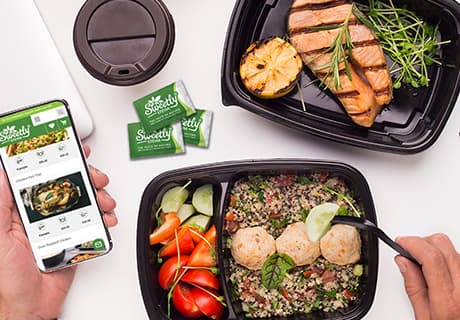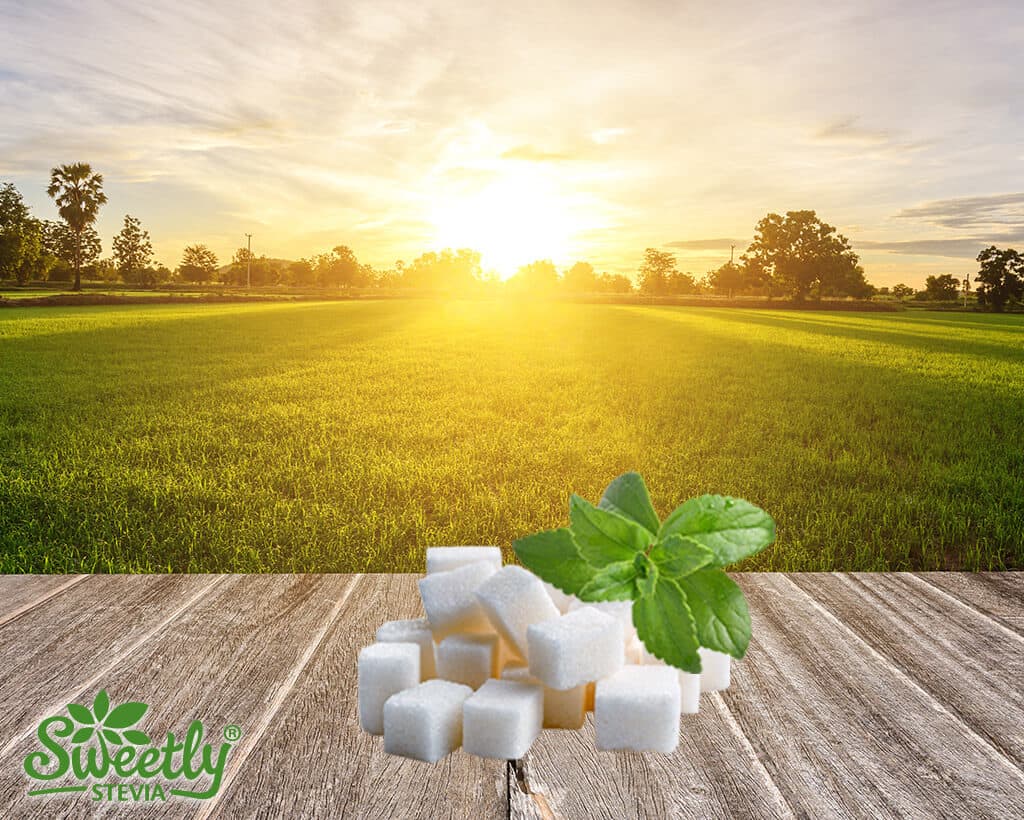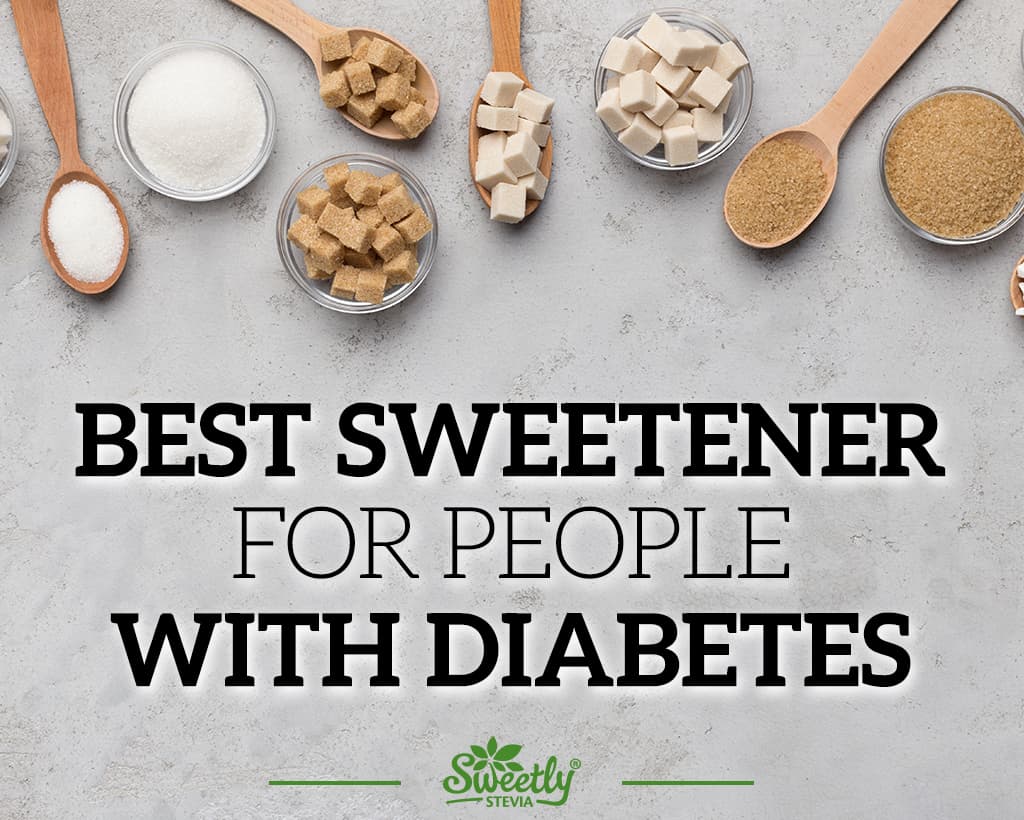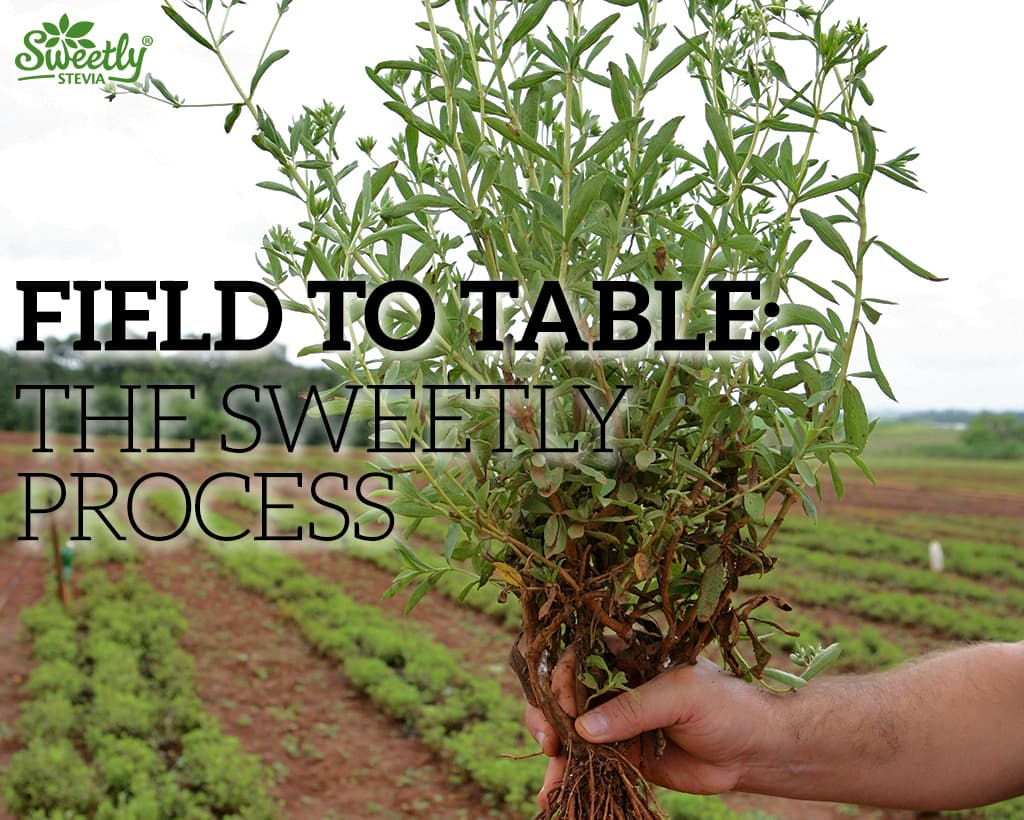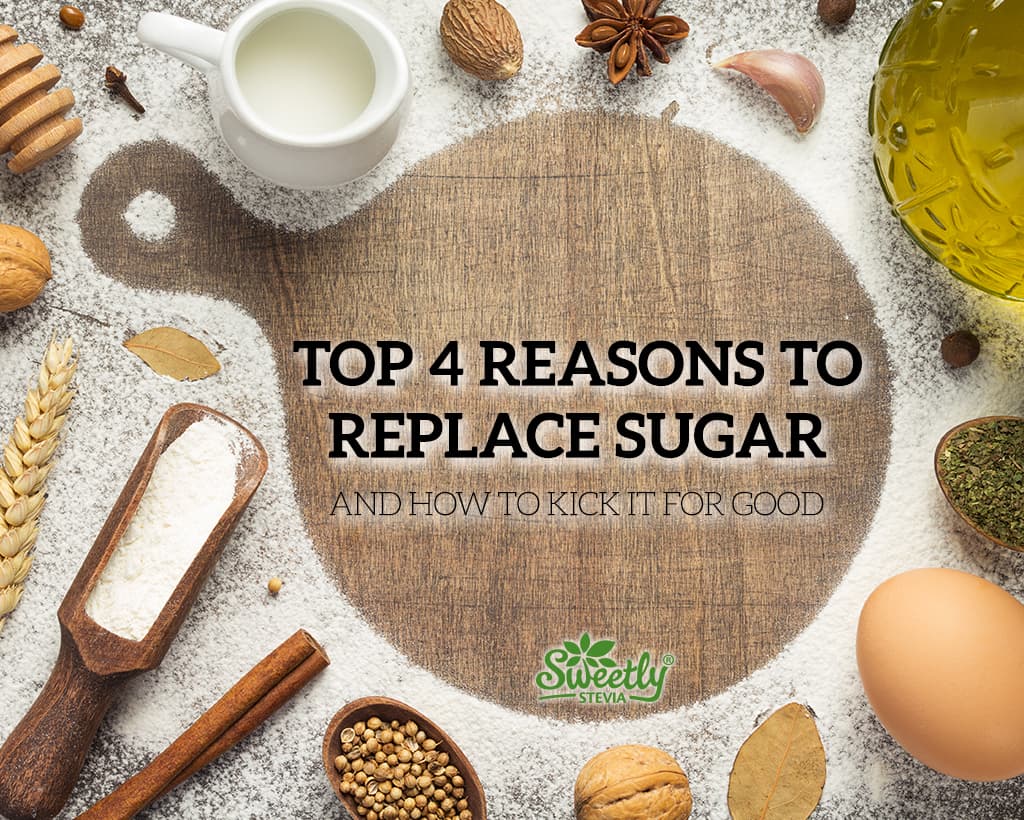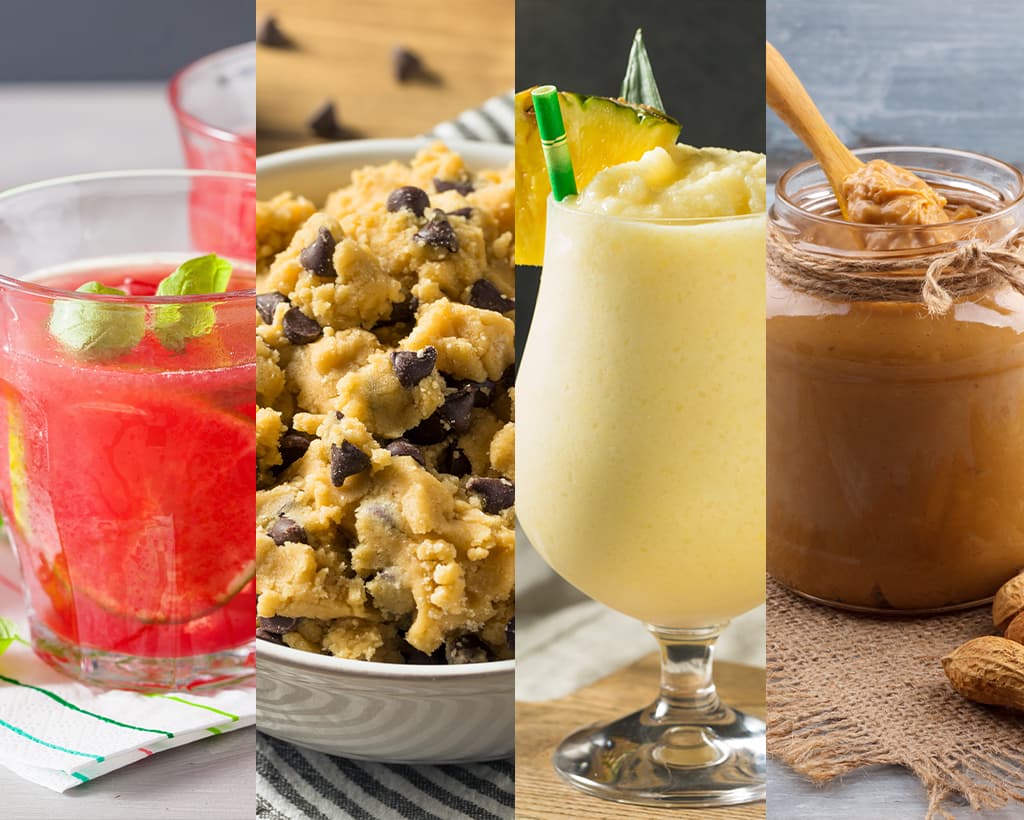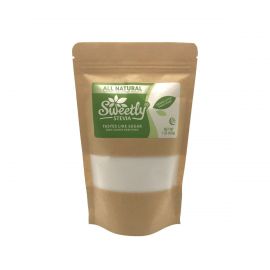How To Substitute Sweetly Stevia For Sugar In Baking
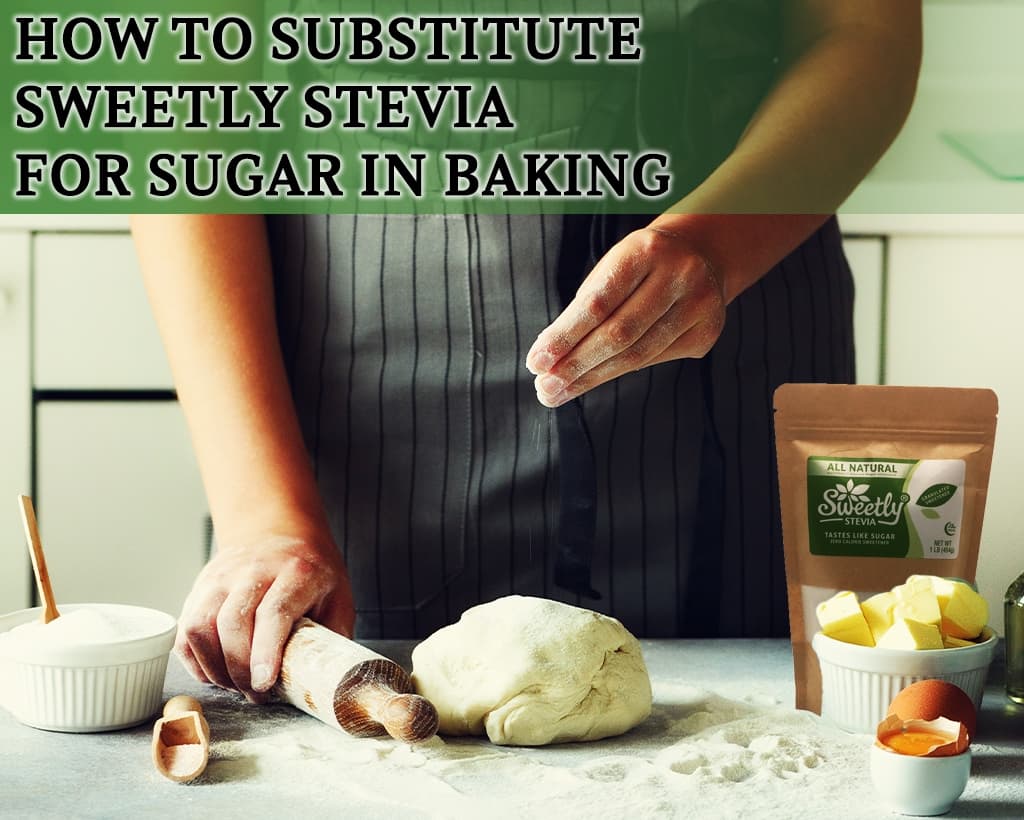
One of the most effective ways to stay healthy and do your body right is by reducing your daily sugar intake, but we probably don't have to tell you that. It's hardly a state secret that refined sugar, as well as sugar's nefarious cousins--corn syrup and high-fructose corn syrup--directly impact weight gain and the health problems associated with obesity.
Perhaps you've researched the all-natural alternatives and have begun experimenting with sugar replacements. If you're interested in delving into the options, we've taken an in-depth look in our previous article, Which All Natural Sweetener Is Right For You? Spoiler alert: only stevia provides zero calories with no risk of allergic reaction and--trigger warning!--diarrhea...
We'll assume you're willing to take our word for it, and now that you have, you're ready to embark on your stevia journey!
While stevia is an excellent substitute for sugar, it's far sweeter per gram than sugar, and because of this you really can't use it to replace sugar at a 1:1 ratio. The good news is that you don't have to break out a calculator and reach back into the farthest recesses of your memory to recall the tricks of multiplying fractions or any other mathematical magic you might have learned in grade school!
Sweetly Stevia has developed the perfect conversion calculator for you to use whenever you want to include stevia instead of sugar!
Our conversion calculator is a great place to start, but when it comes to replacing sugar with stevia in your baking, converting the quantity is only the beginning. We would never leave you hanging--we love you too much!--so we've compiled a list of tips and tricks to keep in mind as you bake with Sweetly Stevia!
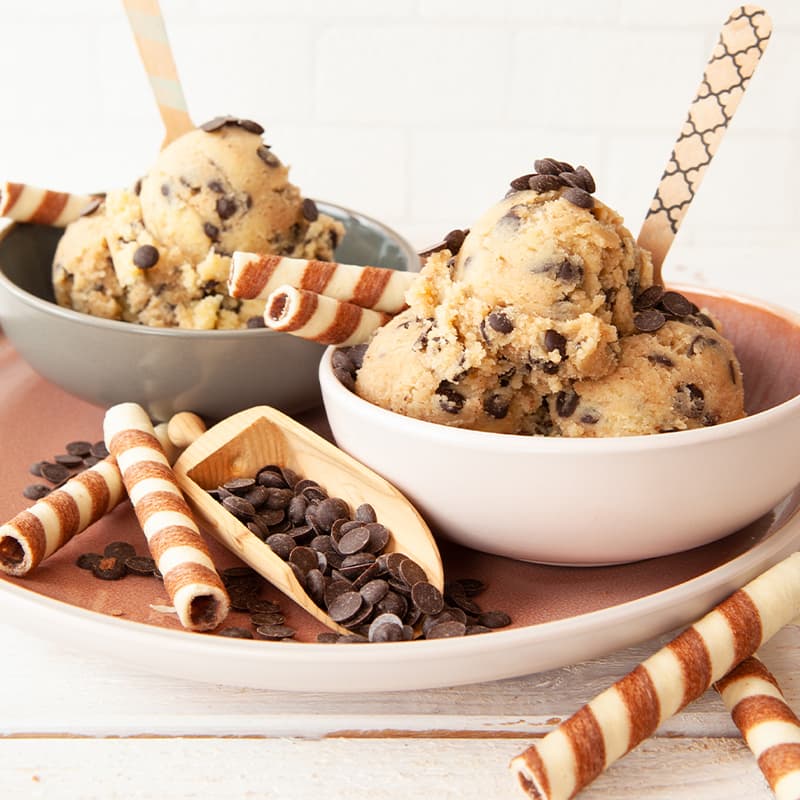
COOKIE DOUGH
You don't have to be a baking genius, or have a degree from the Culinary Institute of America, to foresee that using a liquid to replace a dry ingredient will change the overall consistency of your cookie dough, which will ultimately change the texture of your warm, melty cookies when you pull them out of the oven.
Granulated stevia replaces granulated sugar very well. However, as we first mentioned, the sugar versus stevia conversion exchange isn't an easy 1:1 ratio. What does this mean for your cookie dough? It means that the dry, stevia ingredient that you add to your dough will be a reduced volume than if you use sugar as the original recipe calls for. Less granulated stevia means less dry ingredients to sop up the liquid ingredients like melted butter, eggs, and vanilla extract, which could leave you with dough that is runny…
What to do, what to do? You can never go wrong if you get creative! There are many fun ingredients that you can add to the mix that can compensate. Chopped oats, almond flower, and even powdered milk can effectively restore the texture of the dough while adding yummy taste and improving the "mouth-feel" of the cookies' end result. You can also experiment with adding some delicious spices, which could also pick up the slack. Cinnamon, nutmeg, and cloves will bring a ton of personality to your cookies!
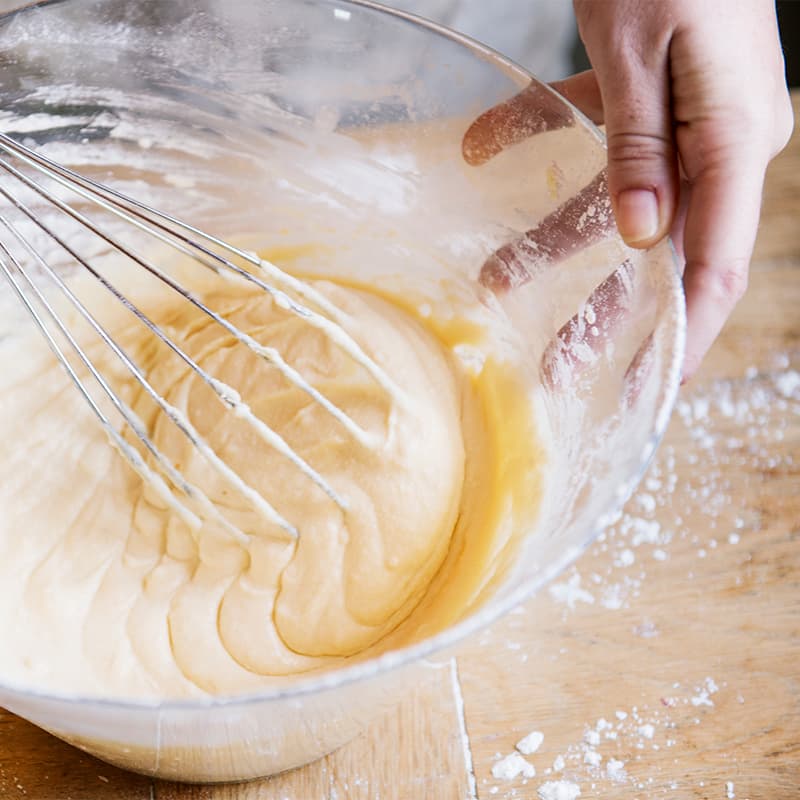
CAKE BATTER
Thicker batter is better!
Huh? If you're wondering why we would reassure you that unexpectedly thick batter is no cause for alarm when it comes to baking cakes, keep reading… Yes, in the previous section we cautioned you about maintaining a cookie dough consistency identical to what the dough would feel like in your hands if you had used real sugar. But bear with us. We aren't contradicting ourselves. There are exceptions to every rule, and cakes are one of them.
Let's take a deep dive into why that is and investigate what your cake batter should look like before you slide that pan into the oven. When it comes to cakes, the conversion rate can get a little tricky, because unlike cookie dough, cake batter rises a heck of a lot more in the oven. For each cup of sugar that your cake recipe calls for, use only a mere 1 teaspoon of stevia as a substitute. If your jaw just dropped, we'll give you a moment to pick it up off the floor. Without conducting a full-on chemistry tutorial to help you comprehend this, we'll just say that unlike with cookies, you can add in liquid ingredients to make up for the lost volume of having used stevia instead of sugar. Trust us, this is what we do.
As we mentioned, you're going to use 1 teaspoon of stevia for every cup of sugar that the recipe calls for. Now, depending on how many teaspoon(s) of stevia end up in your mixing bowl, you are now going to add into the mix ⅓ cup of a liquid ingredient to compensate. The best options for this are applesauce, fruit puree, egg whites or whole eggs, or unsweetened yogurt. Our favorite is applesauce because the watery element of the sauce evaporates while the batter bakes in the oven. If you would like a chewy cake, however, we recommend that you go for unsweetened yogurt. Fruit puree will provide a lighter, fluffier texture, but be advised that fruit puree will pack in a lot of natural sugar. No matter which option you go with, pop that thicker batter in the oven and watch it rise!
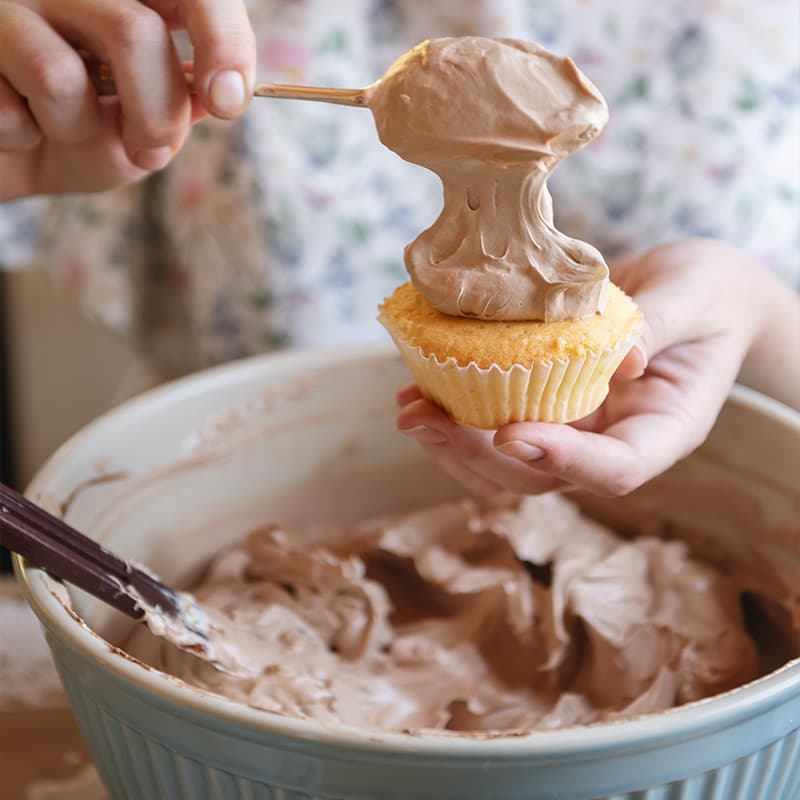
FROSTING, ICING, & TOPPINGS
Mmmm, frosting… Who doesn't remember the good ole days when you were barely taller than the kitchen counter as you watched your mom whip frosting in a bowl? You knew that if you stared at her long enough and exercised enough patience, she would let you lick the whisk, the bowl, and anything else that had frosting on it… the spatula, the spoon, the countertops where globs had plopped down as she mixed ingredients… Our mouths are watering just thinking about it!
Whether you call it frosting, icing, or simply "topping", the best part about the list of ingredients is that it's short, simple, and all-natural. Most frosting recipes call for powdered sugar, softened butter, vanilla extract, and milk.
You're a quick study, so we're willing to bet that as you read this, you're already anticipating the texture and consistency issues that could arise if you use stevia instead of sugar without adding additional ingredients to compensate. Not this time, baby!
Instead of adding additional ingredients to your frosting recipe, you'll want to use heavy whipping cream in replacement of milk. Why? It's far thicker than milk and you can beat it with an electric mixer to whatever stiff consistency you like best! You don't even have to adjust the quantity when replacing, either. In a medium-sized bowl, first use an electric mixer to beat your heavy whipping cream until you are able to form "peaks". In a separate bowl, once you let your kids lick the electric whisk, again use your electric mixer on a low speed to mix the stevia, soft butter, and vanilla extract. This mixture will turn into a flakey paste of sorts. Then plop your butter paste into the whipped cream and with your electric mixer kept on a low setting, mix the paste into the whipped cream until you have a thick consistency that will spread easily over cakes, cupcakes, and muffins!
Well, there you have it! We invite you to embark on your baking-with-stevia journey by trying out these tips on your cookies, cakes, and frostings using Sweetly Stevia's granulated stevia products. If you'd like to stay up to date with the latest stevia recipes, then be sure to click the subscribe button to follow our blog! We are always posting new articles and recipes every week! You can also visit the Recipe tab of our website if you would like to see a list of recipes'-past! Happy baking!
